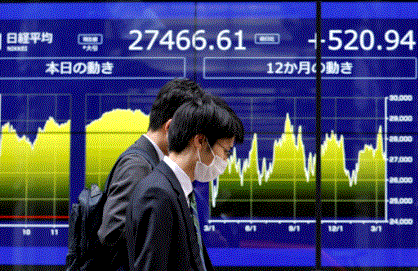Asian Stocks pulled back on Friday after an early rally, as investors closely monitored developments from China’s legislative session. The focus was on potential policy measures from the Standing Committee of the National People’s Congress (NPC), China’s top legislative body, which is expected to introduce new economic support policies aimed at boosting the country’s slowing growth.
However, the optimism surrounding these potential measures quickly waned as traders weighed the likelihood of their effectiveness against mounting global uncertainties, particularly concerns over possible tariff hikes from a second Donald Trump presidency.
China’s CSI 300 Index, which tracks the performance of major Shanghai and Shenzhen stocks, initially surged but gave up its gains as the market awaited clarity on the government’s next steps.
While expectations are high for China to announce policy interventions—such as measures to bolster local government debt and stimulate consumer spending—the market remained cautious, particularly with global trade tensions and the looming threat of tariffs from the US.
Michelle Lam, a Greater China economist at Societe Generale SA, suggested that any potential Chinese stimulus might focus on supporting local government finances and reviving domestic consumption, areas that have shown signs of weakness in recent months.
Yet, many investors were left wondering if such actions would be sufficient to offset the broader challenges facing China’s economy, including weak demand and slowing industrial output.
The broader regional picture showed mixed results. While Chinese stocks were volatile, equities in Australia and Taiwan posted gains, helping to lift a regional benchmark index for the second consecutive day. The positive sentiment was partly driven by a strong performance from US stocks on Thursday.
The S&P 500 rose by 0.7%, and the Nasdaq 100 surged 1.5%, fueled by the Federal Reserve’s decision to cut interest rates, which raised expectations of continued monetary support for the US economy.
Despite the positive performance in the US, both Treasuries and US equity futures remained largely unchanged during Asian trading hours, reflecting the cautious tone in global markets.
With markets awaiting any concrete details on China’s legislative moves and the ongoing uncertainty surrounding future US-China relations, traders remained hesitant to take strong positions.
The potential for a second term of Donald Trump as US president, and the possibility of a renewed trade war with China, is another key factor weighing on market sentiment. Investors are bracing for how these geopolitical risks might affect global trade flows, supply chains, and investor confidence in the coming months.
While the Chinese government is expected to unveil measures that could support its domestic economy, many analysts remain skeptical about the scale of these efforts in counteracting the broader global risks. As a result, the outlook for Asia’s stock markets remains clouded, with investors remaining cautious and awaiting further signals from both Beijing and Washington.
Hashtags:


















